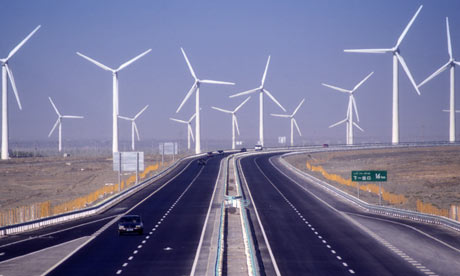 As governments around the world move to implement green stimulus packages a standout initiatives is in Korea.
As governments around the world move to implement green stimulus packages a standout initiatives is in Korea.The country is spending $38.5 billion on clean technology and environmental restoration. The Korean Presidential Committee on Green Growth says it will deliver 956,000 new green jobs. The four year package is about 2.6% of Korea's yearly gross domestic product (GDP). Funding goes to rivers, forests, clean transport and bikeways and, green homes and neighbourhoods.
At the same time this strategy is driving private investment. JP Morgan has just announced that it is raising $1 billion to invest in Korean solar, LEDs (high efficiency lighting) and green cars.
Picture: Back to A future, the restoration of Cheong gye cheon. 5.8kms of freeway back to a river.











